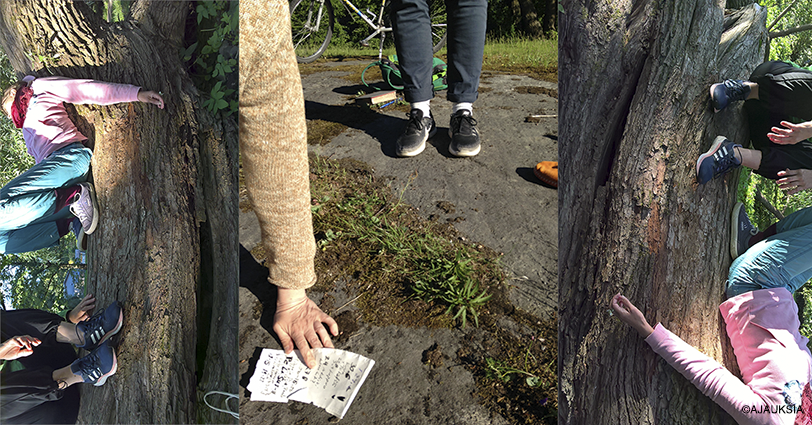Sensory excursion in Lapinlahti Hospital area in Helsinki 27.07.2020
We welcomed the participants and introduce ourselves by
saying our first names. We mentioned some practical things. We lead the people
to the starting point.
Member (1):
We are going to do a small excursion outside, but before we do that, let's go through some things together. First, we can leave our belongings, bags and cellphones (or close it) into the locker. You can also go the bathroom if you wish.
Member (2):
During this excursion we are trying to quiet (or slow) down, these exercises give you the opportunity to disengage from speech. You can give yourself time and space to sense the surroundings.
Member (1): The exercises during the trip are proposals. You can stop the exercise if you feel so, and you can move a side. If there is a situation that you want to stop excursion, please let us know that.
Member (2):
You control the intensity of the experience and to be aware your surroundings and other people around you.
Member (1):
In the end of the trip we will have an opportunity to share experiences in a common conversation. We can take a few minutes to ask, reply, talk or just listen. Do you have any questions?
Member (2):
We have an exercise where we stand and pay attention to the soles of our feet
and their contact with the ground. This works as a preparation for walking. I will give a sign then we end this exercise so do to be aware the distance to see each other.
Pleasure and Playfulness in Times of Crisis.
Sensory Experiences by Ajauksia-group:
An Articulating and Perceiving Body (in Urban Space)
The conversation of Heterotopia
Member (1):
Sensory exercises and art together form a contradiction. Doing an exercise aims for some goal, while art is an open process, its outcome is not known in advance. I examine what this contradiction means in this particular research setup. What is noteworthy in my research is that I approach environments as co-actors.
The environment is then not an object to which different things are done or which is viewed and evaluated, but a party that acts and influences and speaks to me, in their own way[1].
Member (2):
In the biopolitical processes of society, the economic power directed at the individual is embodied. The obedient and consuming bodies are the megasubjects of the global society of this time - body mass in a world where location itself is no longer relevant.
In Debord’s spectacle, social and collective skills will disappear and in same time our actions harmonize (Hardt & Negri 2005, 314).
Through language and communication, however, we can produce new spaces from place to place that are no longer connected to the original place in which we are born, but rather are spaces that are in constant motion and redefinable.
A new kind of economy is emerging in social production processes, where the working body of today should be understood not only as a productive factor of language and communication but also as an opportunity for collective action and production that knows and recognizes many contradictions (Hard & Negri 2005, 45–46).
A member (1) has researched the thing before (Martin 2020a; 2017). The topic has been theorized from their own perspectives, for example
Arlander (mm. 2012), Alaimo 2010 ja Cooren 2010.
